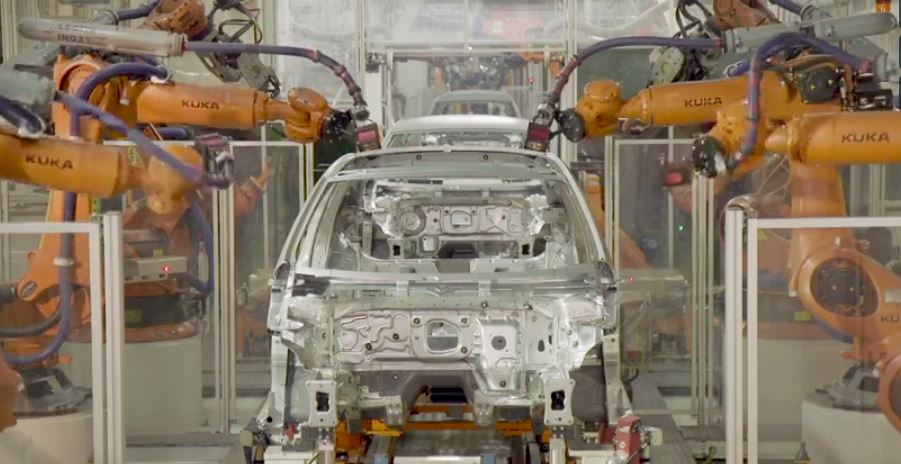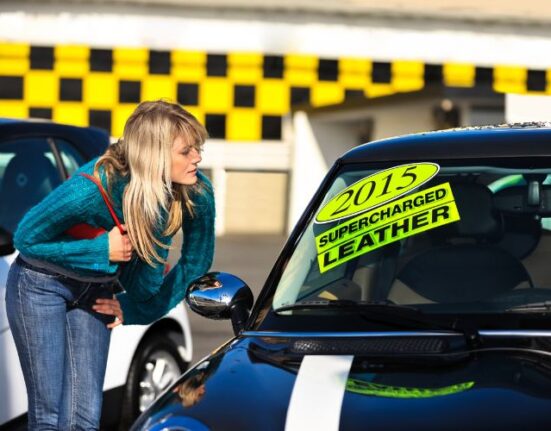432,500 dollars. That was the winning bid made for a portrait painted by an algorithm at New York’s Christie’s auction house. The artwork “Portrait of Edmond de Belamy” is just one of the latest examples of how technology and artificial intelligence are making their way into an activity, art, which until now was thought to be strictly the domain of humans.
But there’s more, including the humanoid AI-DA, the world’s first robot artist, or the AGLAE, a particle accelerator working in the Louvre Museum, and… the robot whisperer. This is the name given to Madeline Gannon, an artist, researcher and lecturer in a Masterclass by SEAT at the SONAR+D. She took advantage of her trip to Barcelona to visit the SEAT factory in Martorell, where she whispered to the 2,000 robots that function 24 hours non-stop, and which are identical to those that interact with her in the work she carries out.
How does it feel to be surrounded by 2,000 robots?
This is the first time I’ve ever been in a car factory surrounded by so many robots and I feel like a kid in a candy store. It’s very exciting to see all these machines working around me. Walking around the factory and seeing them collaborate at the same time to make something as complex as a car is quite incredible. Until now I’ve worked with them in laboratories, never on such a large scale as this. The entire building is like one big three-dimensional robot.
Where and how do art, innovation and technology meet?
As we move into the future, robots are becoming a fundamental part of our everyday lives. As an artist, designer and researcher I want to find ways to demonstrate that not only are they useful, but that they can also be a meaningful part of our lives. And that’s where art comes in, to explore the preferred future scenarios that machines can offer.
And how do you do it?
I develop forms of communication through body language, to create a connection between us and machines. When I work with a robot, I’m aiming to surprise people. We all have expectations with regard to what they do, and I want to demonstrate that there are many different ways of using this amazing technology, not only for automation but also as a way to expand and increase human capabilities.
What do you see in a robot?
I see them as beings with mechanical minds and muscles. When I look at this group of robots welding car bodies they remind me of ants working with a common goal.
Thanks to your work, you’ve been nicknamed the robot whisperer…
I love my nickname! For me, it means not only talking to them, but especially listening to them. Through my work, I hope that more people get involved in robotics, art and technology and that maybe there are more robot whisperers somewhere in the world.
Did you enjoy the factory visit?
It was amazing watching them work and seeing all the tools added to them that help them perform their tasks. Now my head is full of ideas for even more creative and artistic installations. The visit has inspired me for my next project, a collection of robots in my home in Pittsburgh, the capital of robotics in the USA. It’s my dream home, full of all kinds of machines to play and interact with as soon as I get up in the morning.
SEAT commits to innovation, at Sonar+D
Madeline Gannon is a leading global figure in creativity and technology to participate in the latest edition of Sonar+D in Barcelona. She conducted one of the nine Masterclass by SEAT sessions, a new learning format that puts creative talent at the centre of innovation challenges. To view the content, visit the Sonar+D webpage.
The body shop’s 2,000 robots
- They operate in perfect synchronisation 24 hours a day
- They coordinate with 1,700 employees to make one car chassis every 68 seconds
- Some measure up to 6 metres high and can handle 700 kg of weight
- They have six axes and can swivel up to 720º
- A robot can perform up to 16,000 welding spots every day

















